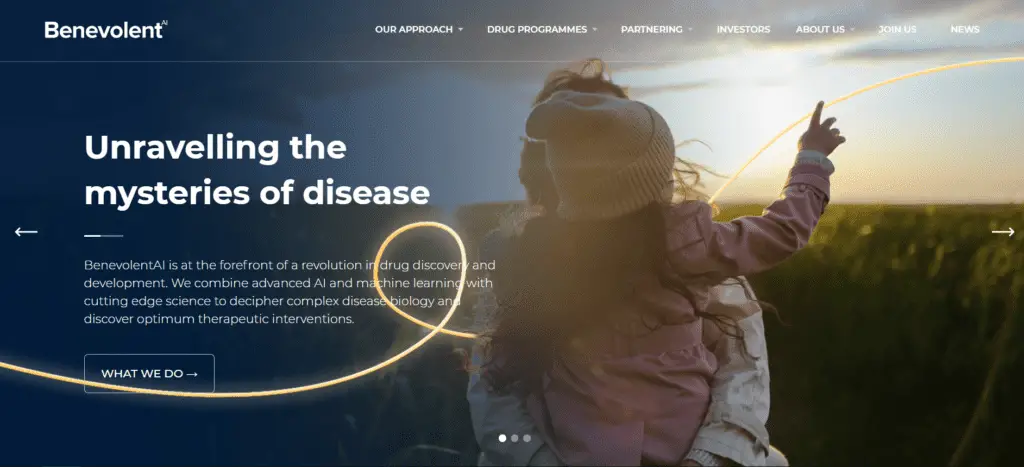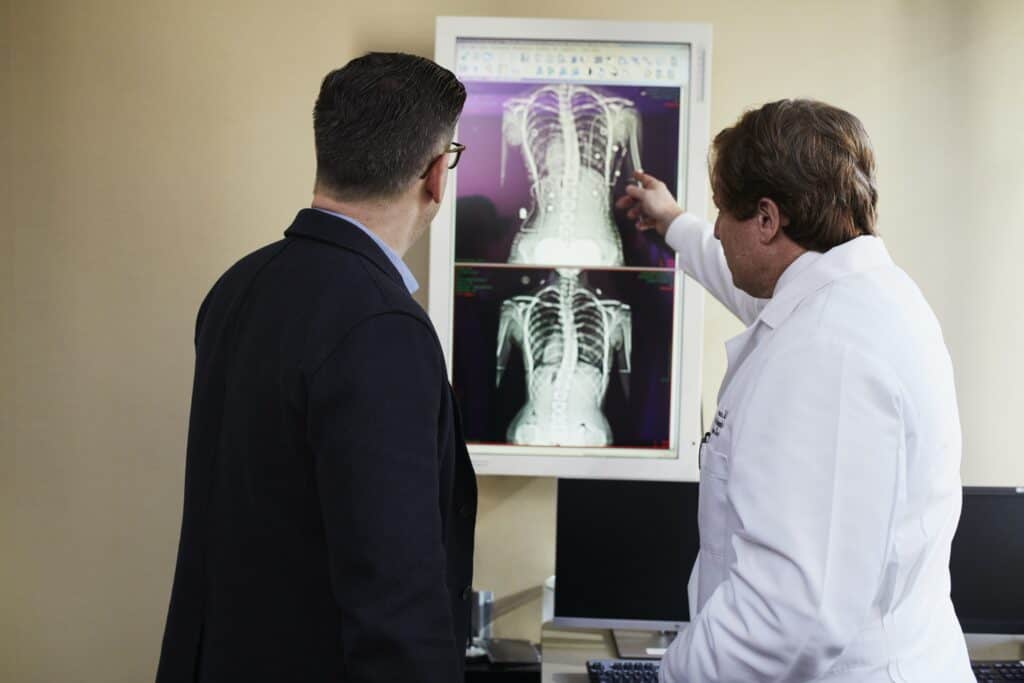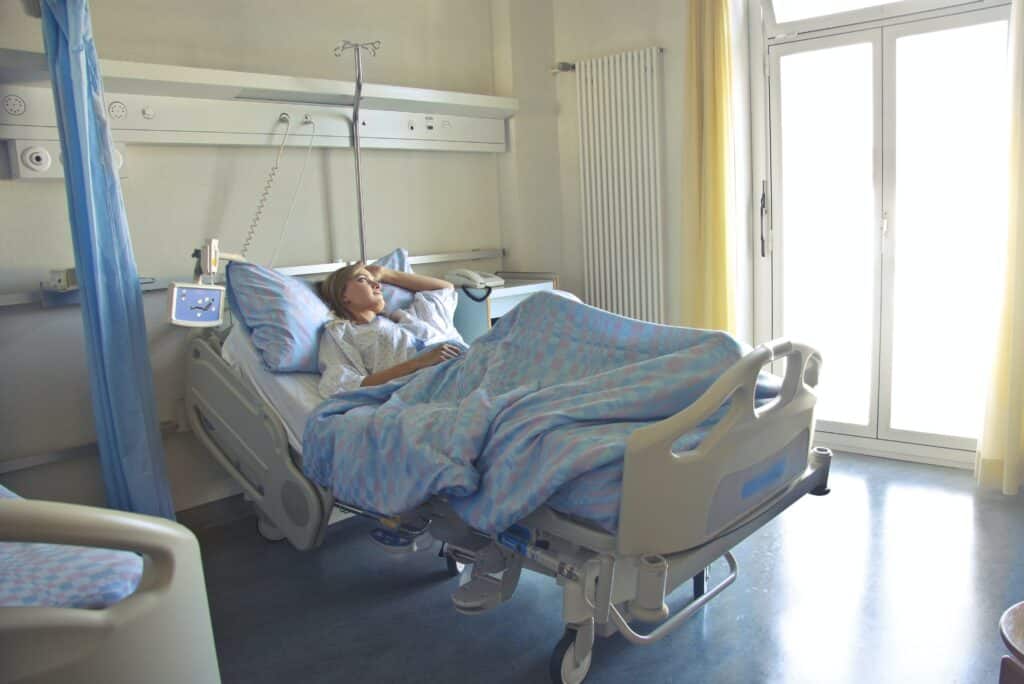This post may contain paid links to my personal recommendations that help to support the site!
You’re here because of your interest in the uses of data analytics in healthcare but one question still remains: is data analytics used in healthcare?
Here’s how data analytics is used in healthcare:
Data analytics is used in healthcare. Data analytics is used across broad areas in improving healthcare operations efficiency, assisting clinical efforts, and optimizing financial claims within hospitals. However, data analytics is relatively new to healthcare and many uses for it in healthcare are rapidly expanding.
I’ve done the research and here are the 13 REAL cases that I’ve found:
13 Real Uses of Data Analytics in Healthcare

- Medical Cost Reduction
- Clinical Risk Prediction
- Hospital Resource Allocation
- Drug Discovery
- Genomic Studies
- Patient Safety Improvement
- Fraud Prevention
- In-Hospital Mortality Prediction
- Medical Computer Vision
- Claim Denial Reduction
- Outpatient No-Show Prediction
- Disease Spread Mapping
- Fall-Risk Reduction
And that’s all 13 real use cases of data analytics in healthcare I found! All of them have had some real-life use in the healthcare setting and have made an impact on the field.
For each use case, I will share more about where they were used.
Read on for more details!
1. Medical Cost Reduction

Data analytics can be applied to business applications within healthcare. In this case, one specific example I found was reducing medical costs through data analytics.
In a study done by Medtronic, it was found that Opioid-Induced Respiratory Depression is more costly and data analytics would be able to reduce that cost significantly, by $535,000 per year!
This is possible through the use of a predictive analytics decision tree framework as a risk-prediction tool to reduce costs and shorten patient stays.
This risk-based tool was based on the patient’s PRODIGY score, which is used to show how likely someone is to have respiratory depression.
Not only does this help in medical cost reduction, healthcare institutions like hospitals can also use them to improve the safety of their patients by determining their risk levels! How useful is that?
2. Clinical Risk Prediction
Similar to the above example, in a study done in Singapore, patient similarity analytics was used to identify common patient characteristics.
This means that you’ll be able to tell if someone is more or less likely susceptible to a certain condition!
This data analytics study used common machine learning models such as K-nearest neighbors, logistic regression, random forest, and support vector machine models.
A tool was developed using these models to support clinical decision-making using a programming language called Python.
You can read more about the study here! (1)
If you’re curious to read more about how Python is used in healthcare, check out my other article over here.
If you’re curious about how R, another programming language commonly used in hospitals, is used in healthcare, then do check out my other article here.
3. Hospital Resource Allocation

Here’s an example that was really used in an impactful way: hospital bed resource allocation.
The Louisiana Department of Health and Hospitals used data analytics to help them support the decision-making of bed resources during the COVID-19 pandemic.
This was done through their predictive analytics tool, Palisade’s @RISK decision support software.
It helped them keep track of all the fatalities that were occurring during the pandemic and to monitor the ICU beds available.
This was crucial in helping the hospital plan out its shortages of beds.
Read more about this use case over here.
4. Drug Discovery
Drug discovery is one of the main applications of data analytics that have been around in the healthcare industry.
One example in the pharmaceutical space is AstraZeneca, where data science and artificial intelligence (AI) are used in the prediction of potential drugs.

Traditional approaches in drug discovery are slow and use just the trial-and-error way of discovering potential medicine.
However, in this case, AstraZeneca has partnered with BenevolentAI to discover a novel AI-generated chronic kidney disease target!
5. Genomic Studies
With the large amount of data being produced in healthcare applications, there is also an increase in interest in getting insight from these healthcare data.
Currently, there are genomic studies being done to provide better insights into our bodies from the data.
DNAnexus is one of such companies, where artificial intelligence is used to help us better understand our bodies through genomic data. Their main products include Titan and Apollo, with both involving applications of healthcare data.
Titan identifies variants and mutations with a genome and creates high-quality datasets. This supports any genomic work and will be used for conducting drug discovery research.
In addition to Titan, Apollo helps its users gain insight into large genomic datasets by identifying any possible mutations and their related diseases.
The data can be taken from various healthcare sources such as clinical trials to medical records.
Read more about their company on their website here. Or check out another article that reports about DNAnexus here.
6. Patient Safety Improvement

According to a patient survey done in 2017, more than 21 percent of people in the U.S. have seen a medical error for themselves, and 31 percent for the medical care of a relative or friend.
This is really high risk since we need to consider that every mistake involves someone’s life. Here’s an example of how data analytics has helped improve that!
Allina Health has implemented the use of predictive analytics and triggers to help with better safety event reporting.
During their pilot study, they found that patient safety reporting was improved.
This is much better than manual reporting of safety events and even helped in identifying potential patient safety events.
You can read more about this application of analytics to safety event reporting here.
In a separate study (2), medication errors were prevented using automated text classification techniques such as Natural Language Processing.
These data analytics approaches to solving errors in medicine dispensed to patients have helped in saving time and reducing workload for clinicians.
This would help them facilitate better data-driven discussions for their error prevention strategy.
You can read about this study over here.
7. Fraud Prevention

In the US, the National Healthcare Anti-Fraud Association estimates that up to $68 billion a year is lost through fraud.
In a lesser-known area within healthcare, fraud prevention is also key to ensuring that all resources in a hospital get used properly.
Here’s a real use case for data analytics being used in the fraud detection of healthcare providers.
In Dataiku, machine learning approaches are used to help in detecting fraud in healthcare. Their products find patterns of interest and detect such anomalies.
These anomalies help flag any possible fraud. More on their anomaly detection here.
Here’s a video introduction on Dataiku:
The Financial Investigations and Provider Review (FIPR) department from Highmark Inc has also seen some success with AI applications in healthcare, with $260M saved in healthcare fraud and waste.
Now that’s a lot of money saved!
You can read more about it over here.
8. In-Hospital Mortality Prediction
COVID-19 has impacted hospital mortality and data science has made an impact in helping to predict in-hospital mortality through machine learning models.
Let’s take a look at one study done in a hospital.
A study was done at the Robert Wood Johnson University Hospital (RWJUH) in New Jersey, USA, where COVID-19 patient data were analyzed to detect potentially higher mortality rates.
Common blood test data was used to create an In-Hospital Mortality Risk Score using LASSO regression.
This regression model helped identify a patient’s mortality rate based on symptoms, which can help in the allocation of more resources to those with higher mortality risk!
You can read more about this mortality prediction from the paper here. (3)
9. Medical Computer Vision

The use of data analytics can also be applied to computer vision, where AI models are used for medical reasons. Computer vision can aid physicians in their jobs and provide support in high-stress environments.
Here are 2 applications I found:
1. Automatic Detection of COVID-19 Cases
During the COVID-19 pandemic, doctors had to physically examine chest x-rays to confirm infection of the virus and this led to time-consuming and strenuous work.
With the use of computer vision, x-ray films of patients can be automatically screened.
This study (4) explored this concept on real patient x-rays and achieved a high accuracy score of 97.33%. This is another breakthrough that really impacts the lives of people!
2. Detection of Blood Loss During Surgery
Gauss Surgical, an AI tech company uses computer vision to determine how much blood has been lost by a patient just by holding up a blood-soaked cloth up to a camera.
Imagine how useful this is for clinicians in the operating theatre!
Their main product, Triton, has helped hospitals detect hemorrhages earlier, leading to earlier intervention by doctors. The most common use of this technology is for real-time tracking of blood loss during childbirth.
Check out their video below!
10. Claim Denial Reduction
Healthcare providers face issues with claim denials every year and revenue is affected by a sizable amount. $262 billion were denied in February 2021 and data analytics have been shown to help in recouping revenue.
RCCH Healthcare Partners, a healthcare provider in Tennessee has boosted its claim denial strategy through the use of predictive analytics.
It has provided better ways for claim denial identification and has helped uncover trends with denials. A daily claim denial scoring system has provided revenue cycle management staff with info on high-value claim denials.
This means that the staff can and target those with high-value claims to ensure they are not denied.
Read more about this use case here!
11. Outpatient No-Show Prediction
Outpatient no-shows are common among many healthcare providers and data analytics has the potential to improve efficiency by predicting the likelihood of no-shows. Here’s a great example from Singapore:
Integrated Health Information Systems (IHIS), the main healthcare IT leader in Singapore has developed a No-show Predictive Model to tackle this problem.
This model identifies patients who are likely no-shows for hospital resource optimization.
This predictive model is currently being used in a pilot program in KK Women’s and Children’s Hospital (KKH) and the National Dental Centre of Singapore.
Read more about it here!
12. Disease Spread Mapping
A hospital in Texas, USA, Parkland Hospital has adopted a data-centered approach in managing its resources. Here’s how they did it.
They mapped out the spread of COVID-19 throughout the community and this has helped to optimize resources and encourage vaccinations within the community.
This model was built upon later on to help predict spikes in cases in a 7-day window.
Read more on how data analytics has helped their hospital in various ways over here.
13. Fall-Risk Reduction

Within a hospital, falls can really affect a patient’s health severely but data analytics is currently being used to help reduce the frequency of such falls.
One example is INTEGRIS Health, which is the largest hospital system in Oklahoma.
Their platform integrated strategic KPIs and data visualization onto Power BI data walls within a section of their healthcare facilities.
Power BI is a data visualization tool used to present data in the form of a dashboard to help users better understand and use the data! Curious to learn more about Power BI? Check out this article I wrote here about Power BI.
Within a few months, the insight provided by their platform prevented two falls and doubled surveillance for high-risk patients.
You can read all about their fall-risk prevention platform here.
Related Questions
Final Thoughts
And there we have it – 13 ways data analytics is used in healthcare. Although the use cases are varied, many of them have a very large impact on patients’ lives. Data analytics is truly beginning to transform lives, especially within the healthcare field.
This list might even grow longer over the next decade, based on how powerful the applications are.
I hope this article helps you learn more about data analytics in healthcare. Thank you for reading!
My Favorite Learning Resources:
My Recommended Learning Platforms!
| Learning Platform | What’s Good About the Platform? | |
|---|---|---|
| 1 | Coursera | Certificates are offered by popular learning institutes and companies like Google & IBM |
| 2 | DataCamp | Comes with an integrated coding platform, great for beginners! |
| 3 | Pluralsight | Strong focus on data skills, taught by industry experts |
| 4 | Stratascratch | Learn faster by doing real interview coding practices for data science |
| 5 | Udacity | High-quality, comprehensive courses |
My Recommended Online Courses + Books!
| Topic | Online Courses | Books | |
|---|---|---|---|
| 1 | Data Analytics | Google Data Analytics Professional Certificate | – |
| 2 | Data Science | IBM Data Science Professional Certificate | – |
| 3 | Excel | Excel Skills for Business Specialization | – |
| 4 | Python | Python for Everybody Specialization | Python for Data Analysis |
| 5 | SQL | Introduction to SQL | SQL: The Ultimate Beginners Guide: Learn SQL Today |
| 6 | Tableau | Data Visualization with Tableau | Practical Tableau |
| 7 | Power BI | Getting Started with Power BI Desktop | Beginning Microsoft Power BI |
| 8 | R Programming | Data Science: Foundations using R Specialization | Learning R |
| 9 | Data Visualization | – | Big Book of Dashboards |
More Articles For You
References
- Fang, H.S.A., Tan, N.C., Tan, W.Y. et al. Patient similarity analytics for explainable clinical risk prediction. BMC Med Inform Decis Mak 21, 207 (2021). https://doi.org/10.1186/s12911-021-01566-y
- Zhou S, Kang H, Yao B, Gong Y. Analyzing Medication Error Reports in Clinical Settings: An Automated Pipeline Approach. AMIA Annu Symp Proc. 2018;2018:1611-1620. Published 2018 Dec 5.
- Rustgi V, Makar M, Minacapelli C D, et al. (November 30, 2020) In-Hospital Mortality and Prediction in an Urban U.S. Population With COVID-19. Cureus 12(11): e11786. doi:10.7759/cureus.11786
- Erdaw Y, Tachbele E. Machine Learning Model Applied on Chest X-Ray Images Enables Automatic Detection of COVID-19 Cases with High Accuracy. Int J Gen Med. 2021;14:4923-4931 https://doi.org/10.2147/IJGM.S325609



